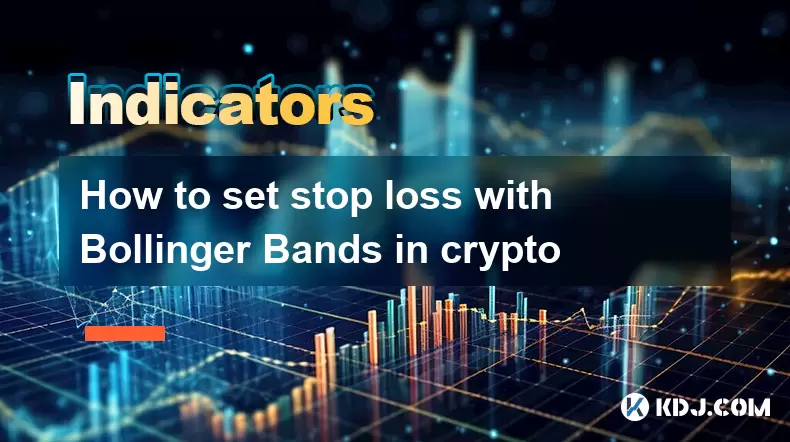-
 Bitcoin
Bitcoin $120400
1.77% -
 Ethereum
Ethereum $3615
7.90% -
 XRP
XRP $3.580
17.84% -
 Tether USDt
Tether USDt $1.001
0.06% -
 BNB
BNB $729.4
1.25% -
 Solana
Solana $179.9
5.04% -
 USDC
USDC $0.0000
0.01% -
 Dogecoin
Dogecoin $0.2311
8.22% -
 TRON
TRON $0.3226
4.04% -
 Cardano
Cardano $0.8490
12.85% -
 Hyperliquid
Hyperliquid $46.45
0.72% -
 Stellar
Stellar $0.4913
8.54% -
 Sui
Sui $4.027
2.00% -
 Chainlink
Chainlink $18.51
11.67% -
 Hedera
Hedera $0.2818
21.51% -
 Avalanche
Avalanche $24.03
7.40% -
 Bitcoin Cash
Bitcoin Cash $508.5
2.90% -
 Shiba Inu
Shiba Inu $0.00001496
3.24% -
 UNUS SED LEO
UNUS SED LEO $8.961
1.83% -
 Toncoin
Toncoin $3.264
3.13% -
 Litecoin
Litecoin $104.6
8.15% -
 Polkadot
Polkadot $4.389
6.11% -
 Uniswap
Uniswap $9.924
10.63% -
 Monero
Monero $337.9
0.49% -
 Pepe
Pepe $0.00001376
2.79% -
 Bitget Token
Bitget Token $4.830
2.46% -
 Ethena USDe
Ethena USDe $1.001
0.05% -
 Dai
Dai $1.000
0.02% -
 Aave
Aave $325.2
1.66% -
 Bittensor
Bittensor $423.7
-0.85%
How to set stop loss with Bollinger Bands in crypto
Using Bollinger Bands to set adaptive stop loss levels helps traders manage risk effectively in volatile crypto markets by aligning with real-time price dynamics and volatility shifts.
Jul 13, 2025 at 07:28 am

Understanding Stop Loss in Crypto Trading
In the volatile world of cryptocurrency trading, managing risk is essential. A stop loss is a crucial tool that allows traders to limit potential losses by automatically closing a position when the price reaches a specified level. This mechanism helps protect capital and prevent emotional decision-making during sharp market swings. In crypto markets, where prices can move dramatically within minutes, using a well-placed stop loss is not optional—it’s a necessity.
Stop loss orders are particularly effective when combined with technical indicators like Bollinger Bands. These bands provide dynamic levels of support and resistance based on volatility, making them ideal for determining where to place stop loss orders in real-time trading scenarios.
What Are Bollinger Bands?
Bollinger Bands are a popular technical analysis tool developed by John Bollinger. They consist of three lines: a simple moving average (SMA), usually set at 20 periods, and two outer bands that are standard deviations away from the SMA. The upper band represents overbought conditions, while the lower band indicates oversold territory.
The dynamic nature of Bollinger Bands adjusts according to market volatility. When the market is calm, the bands contract, and during high volatility, they expand. This feature makes Bollinger Bands especially useful for setting adaptive stop loss levels rather than static ones, which can be easily triggered in fast-moving crypto markets.
How to Use Bollinger Bands to Set Stop Loss
Setting a stop loss using Bollinger Bands involves identifying key levels based on price action relative to the bands. Here's how you can do it:
- Determine the trend direction—if the price is consistently touching or staying above the middle band, it may indicate an uptrend; if below, it suggests a downtrend.
- Place the stop loss beyond the opposite Bollinger Band—for example, if entering a long trade after a bounce from the lower band, set your stop loss just below the lower band.
- Adjust dynamically as the bands shift—since Bollinger Bands change with volatility, reevaluate your stop loss placement periodically or use trailing stops.
This method ensures that your stop loss adapts to current market conditions rather than relying on fixed values that may not reflect real-time dynamics.
Combining Bollinger Bands with Other Indicators for Better Accuracy
While Bollinger Bands alone offer valuable insights, combining them with other tools enhances the reliability of stop loss placements. For instance:
- Volume indicators—sudden spikes in volume near a Bollinger Band can signal strong support or resistance, reinforcing the validity of the stop loss level.
- RSI (Relative Strength Index)—if RSI shows divergence while price touches a Bollinger Band, it could suggest a reversal, prompting tighter stop loss adjustments.
- Moving Averages—aligning your stop loss with key moving averages adds another layer of confirmation to your trading strategy.
Using multiple confirmations reduces false signals and increases the probability that your stop loss won't be prematurely hit due to minor price fluctuations.
Practical Example: Setting a Stop Loss Using Bollinger Bands on a Crypto Chart
Let’s walk through a practical scenario using Bitcoin on a 4-hour chart:
- Select the time frame—choose the 4-hour chart for a medium-term trade setup.
- Apply Bollinger Bands—set the default parameters (20-period SMA, 2 standard deviations).
- Identify a bounce from the lower band—Bitcoin hits the lower band and starts to rise, suggesting a potential long entry.
- Set the stop loss—place the stop loss just below the lower Bollinger Band to avoid getting stopped out by small wicks.
- Monitor for volatility changes—as the bands widen or narrow, adjust the stop loss accordingly to maintain optimal risk control.
This approach allows traders to enter trades with confidence while protecting their capital using a data-driven stop loss strategy.
Frequently Asked Questions
Q: Can I use Bollinger Bands on all crypto assets?
Yes, Bollinger Bands can be applied to any cryptocurrency asset regardless of market cap or trading volume. However, their effectiveness may vary depending on the liquidity and volatility of the specific coin or token.
Q: How often should I adjust my stop loss when using Bollinger Bands?
Adjustments depend on your trading style and market conditions. Day traders might adjust every few hours, while swing traders may review daily. Reassess whenever there’s a significant shift in volatility or price behavior.
Q: What happens if the price breaks through the Bollinger Band?
A breakout doesn’t necessarily mean a reversal or continuation. It often indicates increased volatility. If the price closes beyond the band, it could signal a strong move in that direction. In such cases, consider tightening or trailing your stop loss to protect gains.
Q: Is it safe to rely solely on Bollinger Bands for setting stop loss?
No single indicator should be used in isolation. While Bollinger Bands are powerful, combining them with volume, candlestick patterns, or momentum oscillators improves the accuracy of stop loss placements and overall trade management.
Disclaimer:info@kdj.com
The information provided is not trading advice. kdj.com does not assume any responsibility for any investments made based on the information provided in this article. Cryptocurrencies are highly volatile and it is highly recommended that you invest with caution after thorough research!
If you believe that the content used on this website infringes your copyright, please contact us immediately (info@kdj.com) and we will delete it promptly.
- MEXC's Q2 Domination: Riding the Crypto Wave to Market Leadership
- 2025-07-18 18:30:12
- Caldera (ERA) Takes Flight: Binance Listing Ignites Crypto Surge
- 2025-07-18 19:10:13
- Hex Trust and Algorand: Institutional Staking Rewards Take Center Stage
- 2025-07-18 19:50:13
- XRP, Ethereum, and the Crypto Rotation: Where's the Smart Money Going?
- 2025-07-18 19:15:13
- DeFi Lending, Fintech, and Morpho: A New Era?
- 2025-07-18 19:50:13
- Ethereum, Litecoin, and Institutional Crypto: What's the Deal?
- 2025-07-18 19:55:13
Related knowledge

Advanced RSI strategies for crypto
Jul 13,2025 at 11:01am
Understanding the Basics of RSI in Cryptocurrency TradingThe Relative Strength Index (RSI) is a momentum oscillator used to measure the speed and chan...

Crypto RSI for day trading
Jul 12,2025 at 11:14am
Understanding RSI in the Context of Cryptocurrency TradingThe Relative Strength Index (RSI) is a momentum oscillator used to measure the speed and cha...

Crypto RSI for scalping
Jul 12,2025 at 11:00pm
Understanding RSI in the Context of Crypto TradingThe Relative Strength Index (RSI) is a momentum oscillator widely used by traders to measure the spe...

What does an RSI of 30 mean in crypto
Jul 15,2025 at 07:07pm
Understanding RSI in Cryptocurrency TradingRelative Strength Index (RSI) is a momentum oscillator widely used in cryptocurrency trading to measure the...

What does an RSI of 70 mean in crypto
Jul 13,2025 at 06:07pm
Understanding the RSI Indicator in Cryptocurrency TradingThe Relative Strength Index (RSI) is a widely used technical analysis tool that helps traders...

Does RSI work in a bear market for crypto
Jul 16,2025 at 01:36pm
Understanding RSI in Cryptocurrency TradingThe Relative Strength Index (RSI) is a momentum oscillator used by traders to measure the speed and change ...

Advanced RSI strategies for crypto
Jul 13,2025 at 11:01am
Understanding the Basics of RSI in Cryptocurrency TradingThe Relative Strength Index (RSI) is a momentum oscillator used to measure the speed and chan...

Crypto RSI for day trading
Jul 12,2025 at 11:14am
Understanding RSI in the Context of Cryptocurrency TradingThe Relative Strength Index (RSI) is a momentum oscillator used to measure the speed and cha...

Crypto RSI for scalping
Jul 12,2025 at 11:00pm
Understanding RSI in the Context of Crypto TradingThe Relative Strength Index (RSI) is a momentum oscillator widely used by traders to measure the spe...

What does an RSI of 30 mean in crypto
Jul 15,2025 at 07:07pm
Understanding RSI in Cryptocurrency TradingRelative Strength Index (RSI) is a momentum oscillator widely used in cryptocurrency trading to measure the...

What does an RSI of 70 mean in crypto
Jul 13,2025 at 06:07pm
Understanding the RSI Indicator in Cryptocurrency TradingThe Relative Strength Index (RSI) is a widely used technical analysis tool that helps traders...

Does RSI work in a bear market for crypto
Jul 16,2025 at 01:36pm
Understanding RSI in Cryptocurrency TradingThe Relative Strength Index (RSI) is a momentum oscillator used by traders to measure the speed and change ...
See all articles

























































































